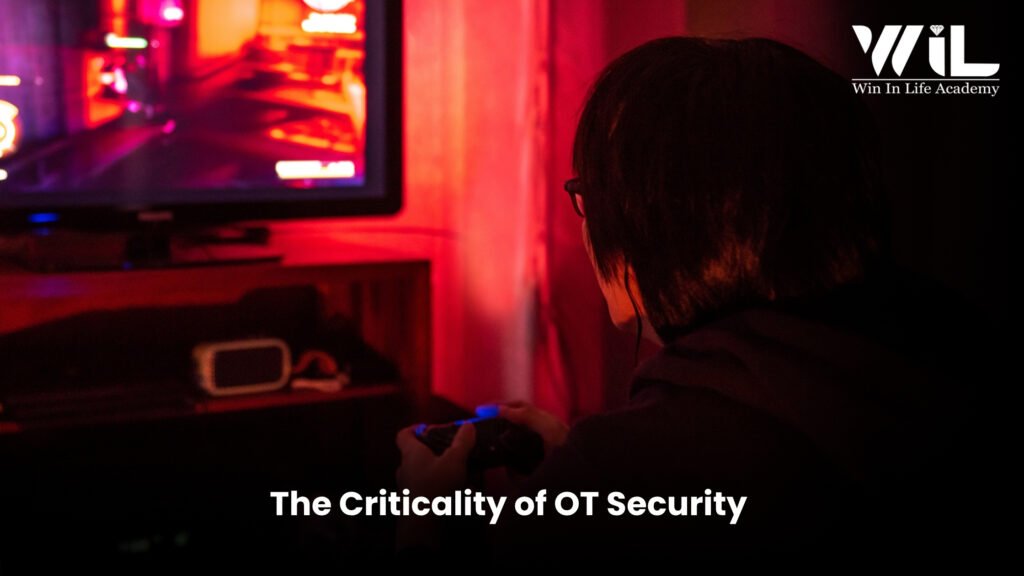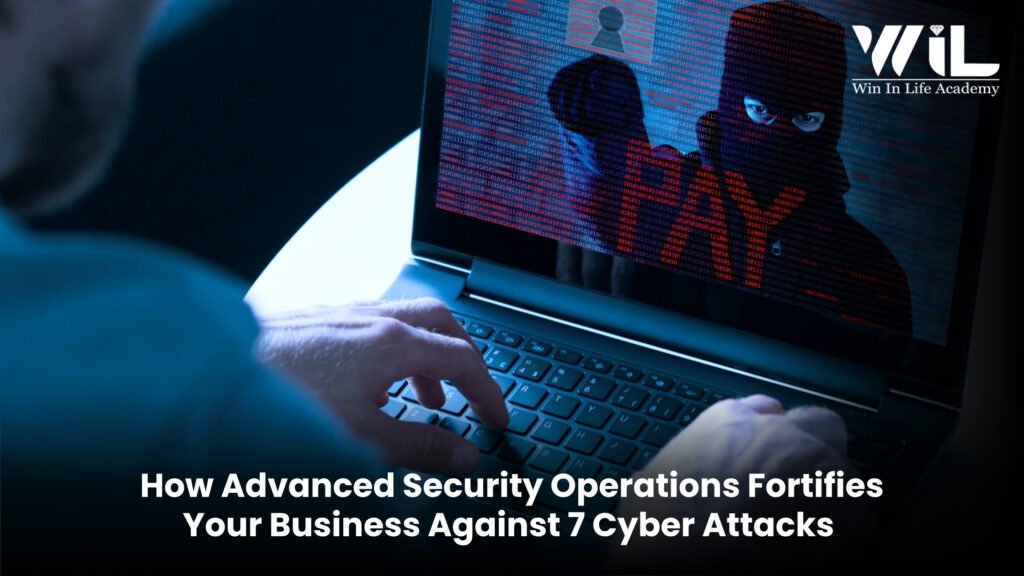The question of whether a business is “truly secure” has moved beyond a simple yes or no. It’s a continuous, evolving challenge, demanding vigilance, expertise, and a proactive stance against an ever-more sophisticated array of cyber threats. For organizations navigating the treacherous waters of cyber warfare, understanding and implementing robust security operations is not just an advantage – it’s a fundamental necessity for survival and sustained growth.
This isn’t about installing antivirus software and hoping for the best; it’s about building a formidable defensive perimeter, establishing real-time threat intelligence, and fostering a culture of perpetual readiness. From the intricate dance of data packets to the silent hum of industrial control systems, every digital touchpoint represents both an opportunity and a potential vulnerability. The goal of effective security operations is to turn those vulnerabilities into strengths, transforming potential breaches into thwarted attempts.
Enroll Now: Cybersecurity Course
Exposing Gaps in Conventional Security Operations
For years, cybersecurity was often viewed as a perimeter defense problem. Build a strong firewall, segment your network, and you’re good to go. This simplistic view, however, has been utterly shattered by the realities of modern cybercrime. Attackers are no longer just external threats; they’re often embedded within networks, leveraging sophisticated phishing campaigns, zero-day exploits, and insider threats. Cloud adoption, remote work, and the proliferation of IoT devices have further blurred traditional network boundaries, making static defenses increasingly obsolete.
The complete volume of security alerts, the complexity of managing disparate security tools, and the chronic shortage of skilled cybersecurity professionals have created a perfect storm. Many organizations find themselves overwhelmed, reacting to breaches rather than preventing them, leading to significant financial losses, reputational damage, and operational disruptions. This reactive posture is a clear indicator that traditional, siloed security efforts are no longer sufficient. A holistic, dynamic approach – one centered around continuous security operations – is the only viable path forward.
Understanding the Security Operations Center (SOC)

At the heart of any mature security operations strategy lies the security operations center (SOC). Imagine a mission of control for your digital assets – a dedicated, centralized unit comprising cybersecurity experts, advanced technologies, and streamlined processes. The SOC’s primary function is to continuously monitor, detect, analyze, and respond to cyber threats. It’s where raw security data is transformed into actionable intelligence, and where potential incidents are escalated, investigated, and neutralized.
A well-functioning SOC operates 24/7, leveraging a stack of sophisticated tools including Security Information and Event Management (SIEM) systems, Intrusion Detection/Prevention Systems (IDS/IPS), Endpoint Detection and Response (EDR), and Threat Intelligence Platforms (TIPs). These tools collect vast amounts of log data, network traffic, and endpoint activity, which SOC analysts then meticulously inspect for anomalies, indicators of compromise (IoCs), and suspicious patterns.
The lifecycle within a SOC typically involves:
- Monitoring and Detection: Continuous surveillance of IT infrastructure, networks, applications, and data for any signs of malicious activity or policy violations.
- Alert Triage and Analysis: Filtering through a barrage of alerts, prioritizing critical events, and conducting deep dives to understand the scope and nature of potential threats.
- Incident Response: Executing predefined playbooks to contain, eradicate, and recover from confirmed security incidents, minimizing damage and restoring normal operations.
- Threat Hunting: Proactive search for undiscovered threats within the network, using threat intelligence and an understanding of attacker tactics, techniques, and procedures (TTPs).
- Vulnerability Management: Identifying and remediating security weaknesses before they can be exploited by adversaries.
- Reporting and Compliance: Documenting security incidents, performance metrics, and ensuring adherence to regulatory requirements.
A robust security operations center is not just about technology; it’s about the synergistic interplay of people, processes, and technology, working in concert to create a resilient cyber defense.
The Evolution and Impact of SOC as a Service
While the benefits of a dedicated SOC are undeniable, building and maintaining one is a significant undertaking. It requires substantial investment in infrastructure, specialized tools, and perhaps most critically, highly skilled personnel. The global cybersecurity talent shortage makes recruiting and retaining top-tier SOC analysts a formidable challenge for many organizations, especially small and medium-sized businesses (SMBs) and those without dedicated security budgets.
This is where SOC as a Service emerges as a game-changing solution. Think of it as outsourcing your security operations to a specialized third-party provider. These providers operate their own, highly mature SOCs, staffed by expert analysts, and equipped with enterprise-grade security technologies. By subscribing to SOC as a Service, organizations can gain access to 24/7 monitoring, advanced threat detection, incident response capabilities, and expert insights without the overhead of building and managing an in-house team.
The advantages of SOC as a Service include:
- Cost-Effectiveness: Significantly lower capital expenditure compared to building an in-house SOC.
- Access to Expertise: Leverage a team of highly skilled and certified cybersecurity professionals.
- Scalability: Easily scale security operations up or down based on evolving business needs.
- 24/7 Coverage: Continuous monitoring and response, even outside of business hours.
- Advanced Technology: Access to sophisticated security tools and threat intelligence typically out of reach for individual organizations.
- Faster Time to Value: Rapid deployment and immediate enhancement of security posture.
For organizations looking to strengthen their security operations without the prohibitive costs and complexities of an in-house solution, SOC as a Service presents a compelling and increasingly popular alternative.
The Criticality of OT Security

In the industrial sector, the convergence of IT (Information Technology) and OT (Operational Technology) networks has introduced a new layer of complexity and risk. OT systems, which include Industrial Control Systems (ICS), Supervisory Control and Data Acquisition (SCADA) systems, Distributed Control Systems (DCS), and other industrial automation technologies, are the backbone of critical infrastructure – power grids, manufacturing plants, water treatment facilities, and transportation networks. Historically, these systems were air-gapped and isolated, but the drive for efficiency, remote management, and data-driven insights has led to increased connectivity.
This connectivity, however, has exposed OT environments to the same cyber threats that plague IT networks, with potentially catastrophic consequences. A cyberattack on an OT system could lead to:
- Physical Damage: Malicious commands could damage machinery, disrupt production, or even cause environmental damage.
- Safety Incidents: Compromised systems could lead to equipment malfunctions, endangering workers and the public.
- Service Disruptions: Attacks on critical infrastructure could cripple essential services like power or water supply.
- Economic Impact: Significant financial losses due to downtime, repairs, and reputational damage.
OT security is a specialized domain within security operations that focuses on protecting these unique and sensitive industrial environments. It requires a deep understanding of industrial protocols, specialized vulnerabilities, and the operational constraints of OT systems. Unlike IT systems, where the priority is often data confidentiality, in OT, availability and safety often take precedence. Stopping a production line to apply a patch, for example, might be far more damaging than a data breach.
Effective OT security strategies typically involve:
- Asset Inventory and Risk Assessment: Identifying all connected OT devices and assessing their vulnerabilities and potential impact.
- Network Segmentation: Isolating OT networks from IT networks and segmenting within OT environments to limit lateral movement of threats.
- Protocol Anomaly Detection: Monitoring industrial protocols for unusual or malicious commands.
- Endpoint Protection for OT: Applying security controls specifically designed for the unique characteristics of OT endpoints.
- Vulnerability Management for OT: Addressing vulnerabilities in control systems and devices.
- Incident Response Planning for OT: Developing specific response plans tailored to the operational realities of industrial environments.
Integrating OT security into broader security operations frameworks is paramount for organizations operating critical infrastructure. It requires a specialized blend of IT cybersecurity expertise and deep industrial process knowledge.
The Strategic Advantage of Managed SOC
While SOC as a Service provides the technical capabilities of a third-party SOC, managed SOC often refers to a more comprehensive partnership. A managed SOC provider not only delivers the 24/7 monitoring and incident response but also takes on the responsibility for managing your security posture, optimizing your security tools, and providing strategic guidance. It’s a proactive, ongoing engagement that goes beyond just responding to alerts.
A managed SOC typically offers:
- Proactive Threat Hunting: Dedicated analysts actively search for threats that might evade automated detection.
- Vulnerability Management: Regular scanning and assessment to identify and prioritize vulnerabilities.
- Security Architecture Review: Expert advice on strengthening your overall security infrastructure.
- Compliance Support: Assistance in meeting regulatory requirements and industry standards.
- Customized Reporting and Analytics: Tailored insights into your security posture and threat landscape.
- Security Awareness Training: Guidance on educating your employees to be the first line of defense.
- Strategic Security Consulting: Long-term planning and advisory services to evolve your security program.
Choosing a managed SOC service allows organizations to offload the entire burden of security operations, freeing up internal IT teams to focus on core business initiatives. It provides peace of mind knowing that a dedicated team of experts is constantly safeguarding your digital assets. This is particularly beneficial for organizations with limited internal cybersecurity resources or those facing complex and rapidly evolving threat landscapes. The value proposition of a managed SOC lies not just in its reactive capabilities but in its proactive and strategic contributions to an organization’s long-term cyber resilience.
Integrating and Optimizing Security Operations

The journey to robust security operations is a continuous process of improvement. Whether you choose to build an in-house security operations center, leverage SOC as a Service, or opt for a comprehensive managed SOC, the underlying principles remain the same: vigilance, continuous monitoring, rapid response, and constant adaptation.
Key considerations for optimizing your security operations include:
- People: Invest in training and retaining skilled cybersecurity professionals. If in-house resources are limited, explore external partnerships.
- Process: Develop clear, well-documented incident response plans and playbooks. Standardize procedures for alert triage, investigation, and remediation.
- Technology: Select and integrate security tools that provide comprehensive visibility, automation, and threat intelligence. Ensure tools are regularly updated and configured correctly.
- Threat Intelligence: Incorporate up-to-date threat intelligence feeds to understand emerging attack vectors and adversary TTPs.
- Automation: Leverage security orchestration, automation, and response (SOAR) platforms to automate repetitive tasks and accelerate incident response.
- Regular Testing: Conduct penetration testing, red teaming, and tabletop exercises to identify weaknesses and validate your security operations capabilities.
- Compliance: Ensure your security operations align with industry regulations and data privacy laws.
- Communication: Foster seamless communication between IT, security teams, and business leadership.
- Continuous Improvement: Regularly review security incidents, analyze performance metrics, and refine your security operations strategies.
For organizations in industrial sectors, the integration of specialized OT security practices into the broader security operations framework is non-negotiable. This requires bridging the gap between IT and OT teams, understanding the unique risks of industrial control systems, and implementing tailored security controls.
Ultimately, effective security operations are about building a proactive, resilient defense mechanism that can withstand the relentless barrage of cyberattacks. It’s about shifting from a reactive posture to a predictive and preventive one, minimizing the impact of incidents, and ensuring business continuity.
Navigating the complexities of modern cybersecurity demands more than just technology; it demands expertise, strategic thinking, and a commitment to continuous learning. Understanding the nuances of security operations, the role of a security operations center, and the benefits of solutions like SOC as a Service and managed SOC, alongside critical areas like OT security, is crucial for any organization aiming to secure its digital future.
Are you ready to transform your cybersecurity posture and ensure your business is truly secure?
Unlock your full potential in the world of cybersecurity. Dive deeper into cutting-edge security operations strategies and gain the knowledge to build impregnable defenses. Visit Win in Life Academy today and explore our comprehensive cybersecurity courses designed to equip you with the skills required by today’s digital battlefield. Your journey to cyber mastery begins now!
References
Advanced Cyber Threats Impact Even the Most Prepared
https://medium.com/mitre-engenuity/advanced-cyber-threats-impact-even-the-most-prepared-56444e980dc8





